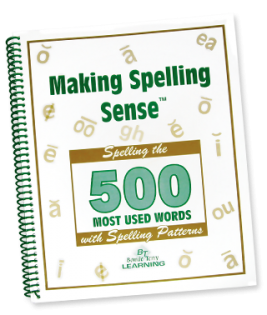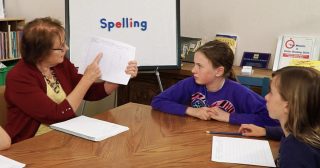5 Spelling Practice Activities Improve Visual Processing
February 5th, 2019Spelling Practice Is Impacted by Visual Processing Areas
Many students have difficulty with weekly spelling practice because they don’t remember well. Visual memory in an area of visual processing impacts your ability to spell. Kids that have poor visual memory may have difficulty with the ability to store and retrieve information that has been given with a visual stimulus. This is the ability to remember that you have seen a picture or a word before.
Visual Discrimination and Form Constancy Impact Spelling Practice
Kids that have trouble with visual discrimination and form constancy may also have trouble with spelling. This is the ability to discern similarities and differences visually. For example, the ability to tell the difference between ‘b’ and ‘d’; ‘p’ and ‘q’; given a word, being able to find the other word that is just the same e.g. fun nuf fnu fun.
Visual Processing Activities That Help Spelling Practice
- This first activity has three steps:
- Place your hands next to your eyes as though it is a camera. Look at your spelling word and then snap a picture of it with your eyes. Close your eyes and see your word in ‘your mind’s eye. Spell it out. Check to see if you got it right.
- Air write your spelling word.
- Write your word on a sheet of paper.
- Post your spelling words on the bathroom mirror as well as next to your bed so you see them frequently throughout the week. Read them every time you are in the bathroom as well as before you go to sleep and when you get up in the morning.
- Color code your spelling words so the vowel pattern or patterns (in multi-syllable words) stands out.
- Color-coding improves retention by 25%.
- Trace your spelling words with your hand.
- Write your spelling words in the sand or on a counter with soap bubbles.
- Look for your spelling words on street signs.
- If you don’t see the complete word, look for the letters in order on street signs. For example, if my word were bike, look for a ‘b’ on a sign, then look for an ‘i’, then a ‘k’, and finally an ‘e’.
- Use ABC noodles and make your spelling words with them. You can even glue them onto a sheet of paper.
Spelling Practice Activities
Spelling programs that use specific methods to address visual processing as well as auditory processing at the same time really make a difference. Programs like Making Spelling Sense, and the Making Spelling Sense II books.

Making Spelling Sense
Learn to Spell with Spelling Patterns and Phonics
Your child or students will learn how to spell over 500 of the most frequently used words in the English language very quickly with this step-by-step method. In fact, you will be able to spell thousands of words.

Bonnie Terry, M. Ed., BCET is internationally recognized as America’s Leading Learning Specialist. She is an award-winning author and learning disability specialist and board-certified educational therapist.
Bonnie is the best-selling author of: School Strategies for ADHD Kids, Five Minutes to Better Reading Skills, Ten Minutes to Better Writing and Study Skills, and The Sentence Zone Game.

























